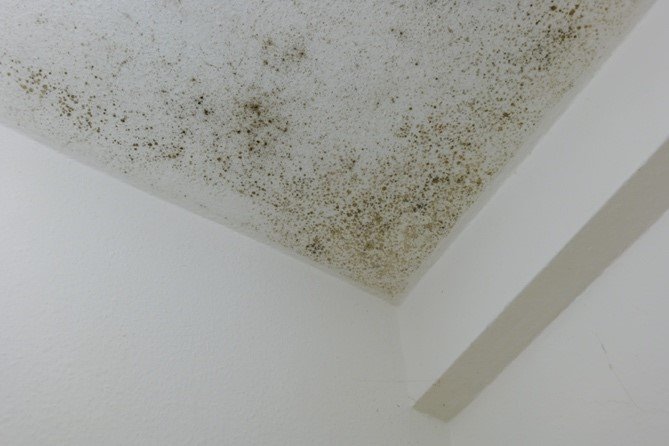As homeowners and homebuyers become more educated about home ownership, a common concern they share is whether or not there’s microbial growth, or, as most people refer to it, mold, in their homes. If you have concerns about mold in your home or mold testing, you shouldn’t ignore them.
Why Should I Get Mold Testing?
As home inspectors, we see a wide variety of mold in our home inspections. Some issues are obvious, such as wet basement walls, under kitchen or bathroom cabinets, or where we see leaking. Other times, it’s a damp or moldy basement smell that alerts the home inspector or homeowner that there may be an issue. There are other times where we’re told by a client that they have someone in the family that gets stuffed up and/or has allergic reactions only when they’re in the basement.
Wet Areas and Visual Growth
You may want to consider mold testing if you have had flooding or discover an area that has water damage or leaks. Areas that are consistently wet are prone to mold growth in a fairly short time depending on the conditions. You can reduce your risk and prevent potential issues by drying out wet areas within 48 hours. Vacuum up standing water, pull back carpets, and run fans and dehumidifiers if necessary to get the area dried out as quickly as possible.
Drainage
Managing the source of water intrusion is key. If you have poor roof water runoff management or drainage issues, these should be corrected. I’ve seen too many times where a homeowner has fans and dehumidifiers running in a wet area of a basement where the root cause starts outside and is not addressed.
Inadequate Ventilation
There are times when your home inspector points out inadequate ventilation in a basement. This could be due to a lack of air returns in each room of the basement. Another common find is that all or most of the supply vents are closed “because it gets too cold in the basement when the air conditioning is running.”
Air Exchange
Since cold air is denser than warm air, it wants to seek out the lowest area. Lack of ventilation and air exchange can result in humidity levels exceeding recommended levels. There may be times when performing a home inspection that one of our home inspectors walks into a basement where it’s cold, damp, and musty smelling. These conditions will alert the home inspector to look for potential signs of microbial growth.
Recommendations
The Environmental Protection Agency (EPA) recommends that the humidity levels in a home be kept in the 30% to 60% range to prevent possible mold growth.
Health Concerns
The presence of mold in a home may or may not cause issues for all people. I once had a home inspector on my team that didn’t need to do mold testing if he was doing a home inspection on a home that had mold in it. On one occasion when I was training him, we entered a home, and within 5 minutes he had watery, itchy eyes and was sneezing. I asked him if he was okay, and he said there was probably mold in the home. Sure enough, we went to the basement, and there were signs of active mold growth on the basement utility room walls. I, on the other hand, had no reaction to the conditions.
How Much Exposure is Too Much?
Exposure to an elevated level of microbial growth or mold spores affects everyone differently. People with compromised immune systems, the elderly, the very young, and those with allergies can be prone to issues when exposed to mold. Symptoms can include watery eyes, runny nose, itching, difficulty breathing, wheezing, coughing, headaches, and fatigue. Continued and repeated exposures to poor indoor air quality can develop into more severe reactions over time. Molds such as Aspergillus and Stachybotrys may produce mycotoxins which can be toxic to some people under certain conditions, resulting in serious illnesses.
Summary
People with potential health issues related to mold exposure should have mold testing conducted as part of their home inspection when buying a new home. If you see the warning signs, have flooding or water intrusion, or detect a damp, musty smell in your basement, there may be microbial growth. You’ll want to test for mold to make sure there are no issues.
Visit our website to learn more or to schedule your mold testing in the Rochester, Owatonna, and Faribault, MN areas. You can contact us today at (507) 202-8942 or use our online “Schedule Now” feature to set up an appointment.



